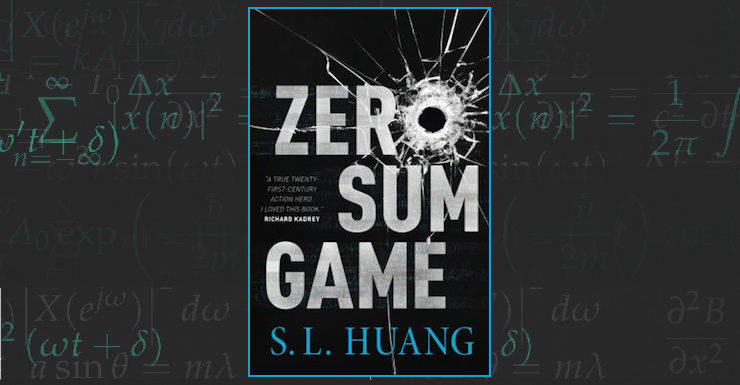Between June and late December, I noticed a disturbing trend. Daylight hours shortened day by day. Where we once had 15 hours of daylight, we now have a paltry 9. That is a loss of one hour of daylight per month. At that rate, by September of 2024, there will be no more daylight and night will rule eternal over a frozen wasteland.1
I am not alone in embracing the power of extrapolation. After all, if there’s one thing that experience teaches us, it is that short term trends always continue without bound—or at least they have over the month or so I tracked them. What futures await can be foreseen using simple math.
Perhaps fictional examples of such extrapolations might help. Take the following five…
Media
Advertising has increased its impact on society over the last century. Shiny brochures assure us that the increasingly sophisticated methods available to the folks on Madison Avenue point towards a future in which convincing a skeptical public to back even a dubious candidate or policy will be as trivial as convincing them to buy an Edsel.2
Frederik Pohl and Cyril Kornbluth explored some implications of this trend in their 1952 classic, The Space Merchants. By the era in which The Space Merchants is set, vast corporations dominate the Earth. Their rule is dependent on skilled media companies presenting the masses with enticing messaging that is little inhibited by grim facts like material shortages, rampant pollution, or (as in the case of the upcoming Venus Project) the fact that Venus is unsuited for human occupation. Star-class copywriter Mitch Courtney of Fowler Schocken advertising agency, assigned the Venus Project, provides the reader with a thrilling tour of the high-stakes corporate politics in a world where truth is whatever the client wants truth to be.
Fuel
The world runs on fossil fuels. The total potential supply of oil is fixed (new oil reserves form far slower than humans use them up). There are finite quantities of fossil fuels. In fact, US oil production peaked in 1970. In the early 1970s, future known reserves were often given as about 30 years. Simple extrapolation reveals that all the oil would have been sucked out of the ground during the early years of the second Bush administration or given increasing demand, perhaps during the Clinton administration.
The setting of Michael P. Kube-McDowell’s 1985 Emprise is shaped by two coincidental developments. The first is the Weak Force Intermodulation Projector, a cunning device that renders nuclear power generators as inert as the nuclear weapons the modulator was created to squelch. The second was the entirely foreseeable end to cheap power as oil reserves ran out without a nuclear option to replace them. Result: a new (although mercifully short) dark age of poverty, ignorance, and famine.
Speed
Between 1900 and 1960 the top speed achieved by human vehicles increased three hundredfold, from about 100 kilometers per hour to about 30,000 kilometers per hour. This is equivalent to an annual increase in speed of about ten percent per year. Sixty-plus years having elapsed since 1960, it follows logically that top speeds should have increased another three hundredfold, to about 9 million kilometers per hour, just shy of 1 percent of the speed of light. To someone in 1960, it would have been unclear how this could be achieved. However, the math is a compelling argument that some path to these prodigious velocities must exist.
Joe Haldeman’s 1974 classic The Forever War details an interstellar war facilitated in part by the development of tachyon-emitting rockets.3 Unbounded by the mass ratios of conventional rockets, tachyon-emitting rockets enable humans to traverse interplanetary and intrastellar distances as easily as navies traversed the oceans in the early 20th century. In combination with relativity and the astonishing discovery that collapsars provide instantaneous travel over galactic distances4, the tachyon rocket facilitates a largely pointless interstellar war that persists for centuries.
Population
Thanks to such factors as large families, decreasing infant death rates, and increasing lifespans, not only did the human population of Earth reach an astonishing 3.5 billion people by 1968, but it was reported that number was growing at slightly more than 2 percent per year. A straightforward calculation shows that the current global population must be somewhere in the vicinity of eleven billion people.5
Although it’s hard to imagine the hellish overcrowded world that math assures us we live in, science fiction has done its best. Consider J.G. Ballard’s 1964 story “Billennium.” Unlike some other authors, Ballard has faith that human institutions will find ways to feed the ever-expanding population. What governments cannot do is make land area.6 Accordingly, Ballard’s hapless protagonists live in buildings with ever-shrinking apartments. Circumstances encourage ingenious solutions to the problem of living space.
Nuclear Proliferation
Between 1945 and 1964 the number of nations with nuclear weapons increased five-fold, an increase of about nine percent per year. The number of extant nuclear weapons increased from three to thousands. Simple math suggests that over the next 60 years, the number of nations with nuclear arsenals could have grown to about 800.7 These nations would control many millions of nuclear warheads (in sum, not cooperatively).
Nevil Shute’s 1957 On the Beach is but one novel to explore the disturbing implications of rampant nuclear proliferation. Legions of small, irresponsible nations armed with inexpensive nuclear weapons led to a catastrophic war that utterly depopulated the Northern hemisphere. Only those lucky enough to be in the Southern hemisphere survive…but only for the months it will take deadly fallout to reach the south. There is nothing to be done but accept inevitable death with dignity.
Extrapolation is a powerful technique, one that allowed the authors of the past to predict the stupendously capable, impoverished, overcrowded, utterly depopulated world in which we’re apparently now living. These are merely a few examples of what can be accomplished using this simple method. There are many more. If I have somehow overlooked your favourite examples, as a simple extrapolation from past essays suggests I have, comments are (as ever) below.
- I will admit that I am unsure how to model an October 2024 day with negative one daylight hour.
- The Edsel was an American car. Canadians can consider this as equivalent to a “Bricklin SV 1.”
- Tachyon rockets emit particles travelling faster than light. The rockets themselves do not exceed C.
- Not to mention the terrifically convenient coincidence that one of the Solar System’s nearest neighbors is a collapsar. The universe itself is compelled to accommodate the power of extrapolation! Or at least the imagination of the author.
- The population should be even larger because the growth rate itself grew over the course of the 20th century. By now the annual growth rate could be four or five percent and the population fifteen or twenty billion.
- Governments could try to make more land or make people smaller, but that’s a subject for another essay.
- Given that there weren’t 800 nations in 1960, we should have expected a wave of regionalism, separatism, and pocket nations. Tom Lehrer suggests another solution, which is for subnational regions and NGOs to acquire nuclear weapons.















Test
Lost the pre-migration comments, I see.
Only temporarily! We’re still in the process of porting over recent comments from the old site–they will show up, but it might take a few days. This and other questions you might have are covered in this article:
Welcome to Reactor! Here’s Where Everything Went and How to Use It
Don’t forget Mark Twain’s great feat of mathematical extrapolation in Life on the Mississipi
https://www.gutenberg.org/cache/epub/245/pg245-images.html
Before the Army Corps of Engineers stabilized it, the Mississippi would lengthen gradually due to the broadening of meanders, and occasionally shorten suddenly due to cutting off meanders. In Mark Twain’s time, there had been a lot of cutoffs, leading to a large net shortening, which he extrapolated gleefully.
Speaking of nuclear proliferation, My Real Children by Jo Walton. One of its two alternate histories, portrays a world with intensive nuclear proliferation and the incineration of multiple cities. (The kicker is that this is the history in which the protagonist has the better life.)
Hmm. The new setup is not great for footnotes – jumping down the page rather than popups, with no link to jump back
Please report issues like that to the bug people so they get addressed. Also so my name isn’t the only one crossing their desk…
I find myself bitterly disappointed that there is no mention here of Yoon Ha Lee’s excellent Machinery of Empire series, and it’s central conceit that maths can change the universe, beliefs and even history if you use the correct calendar or formations.
Of course, it is also very weird, but it’s such an obvious pick for the premise of this article. If you think you might find an unapologetically odd and complex space opera in a very unique series interesting, I happily recommend it to you. It’s also refreshingly short by modern space opera standards, with only the third book making it over 400 pages, and even that not greatly. (Generic ‘you’ here, I would be rather surprised if our article writer hasn’t already read at least part of the series.)
And by sheer coincidence, (or is it? ;D) it’s the author’s birthday today! I wish them many happy returns and many more in print works for their future.
I’m still worried about human population. Education of women and biological intervention and, in “The Forever War”, homosexuality, may bring things under control, but only if those options are available to you.
I’m startled in old stories when someone mentions world population and it’s much less than now. Doctor Who said “six billion” in 2010, if it was 2010. You don’t know with Doctor Who. I read 6.9 billion then, getting close to 8.1 billion now (January 2024, estimated).
And in science fiction, you tend to get a painfully overcrowded world with a number much smaller than these. It will be painful for us anyway as energy supplies and exploitable resources run out. But in other stories, the issues are fixed offstage, and even larger numbers of us are happy and prosperous in a stainless steel future.
I suppose that practically, the question will be how many of us will the artificial intelligences choose to maintain alive, if any. So often, in sci fi, they see most of us as unnecessary. They only need Arnold Schwarzenegger.
Either way, I think people who worry are right, always right.